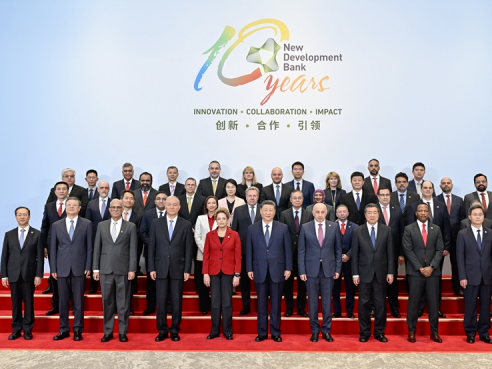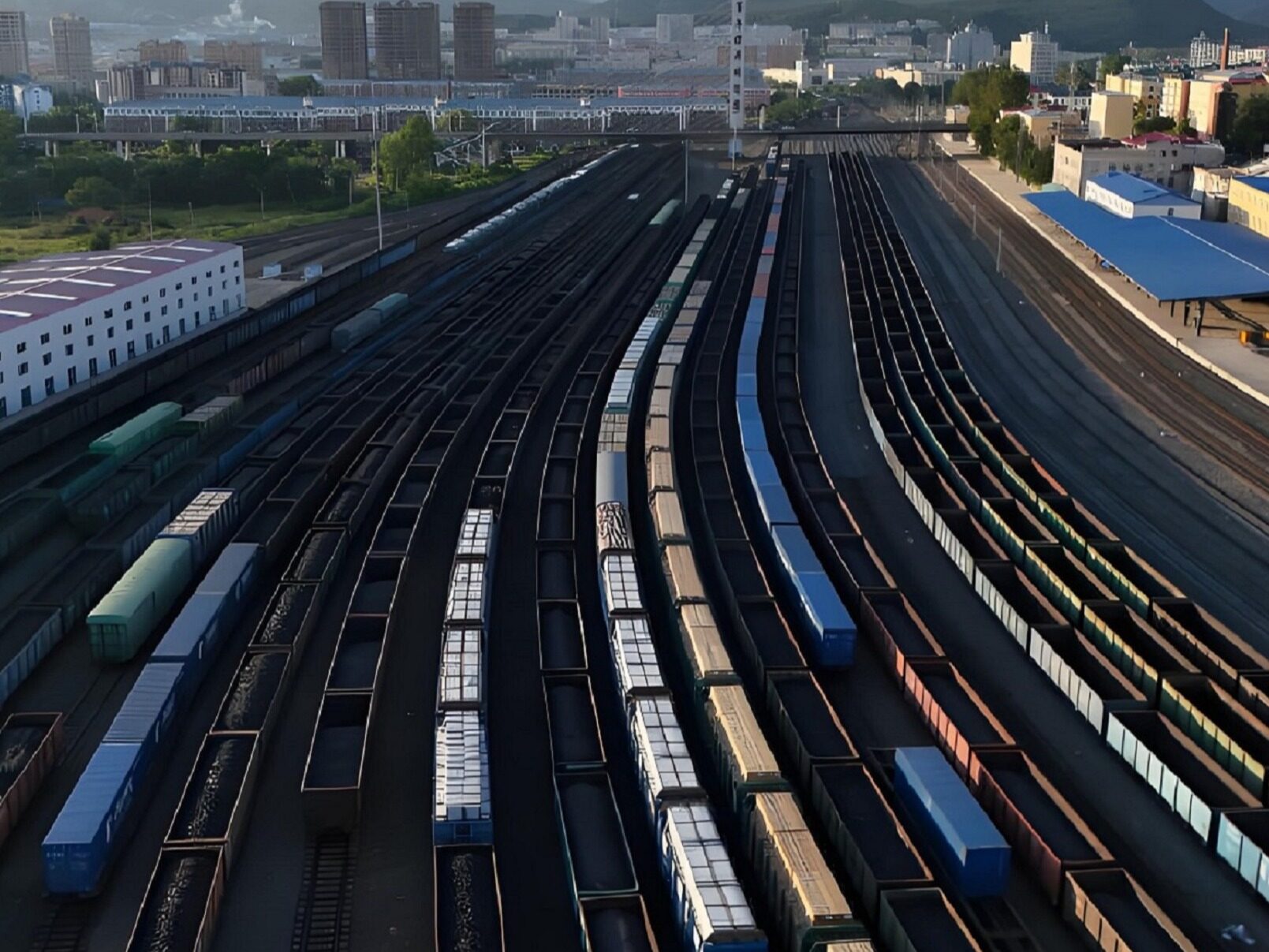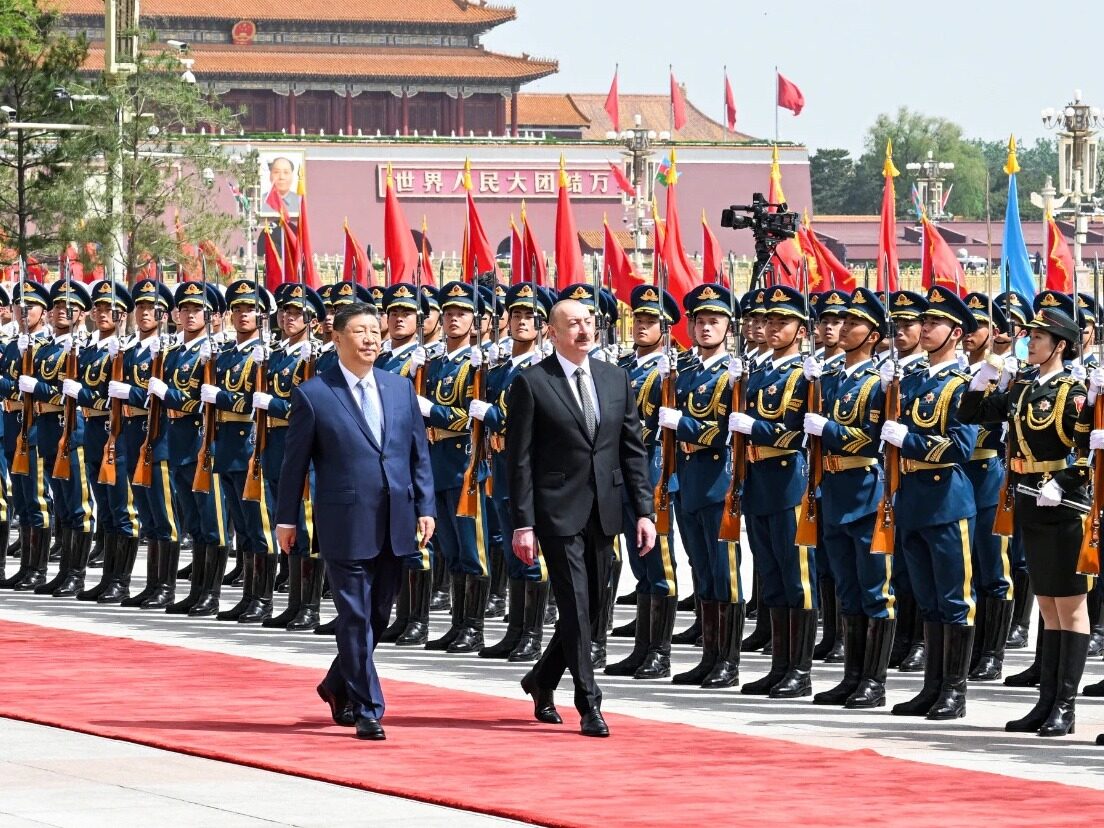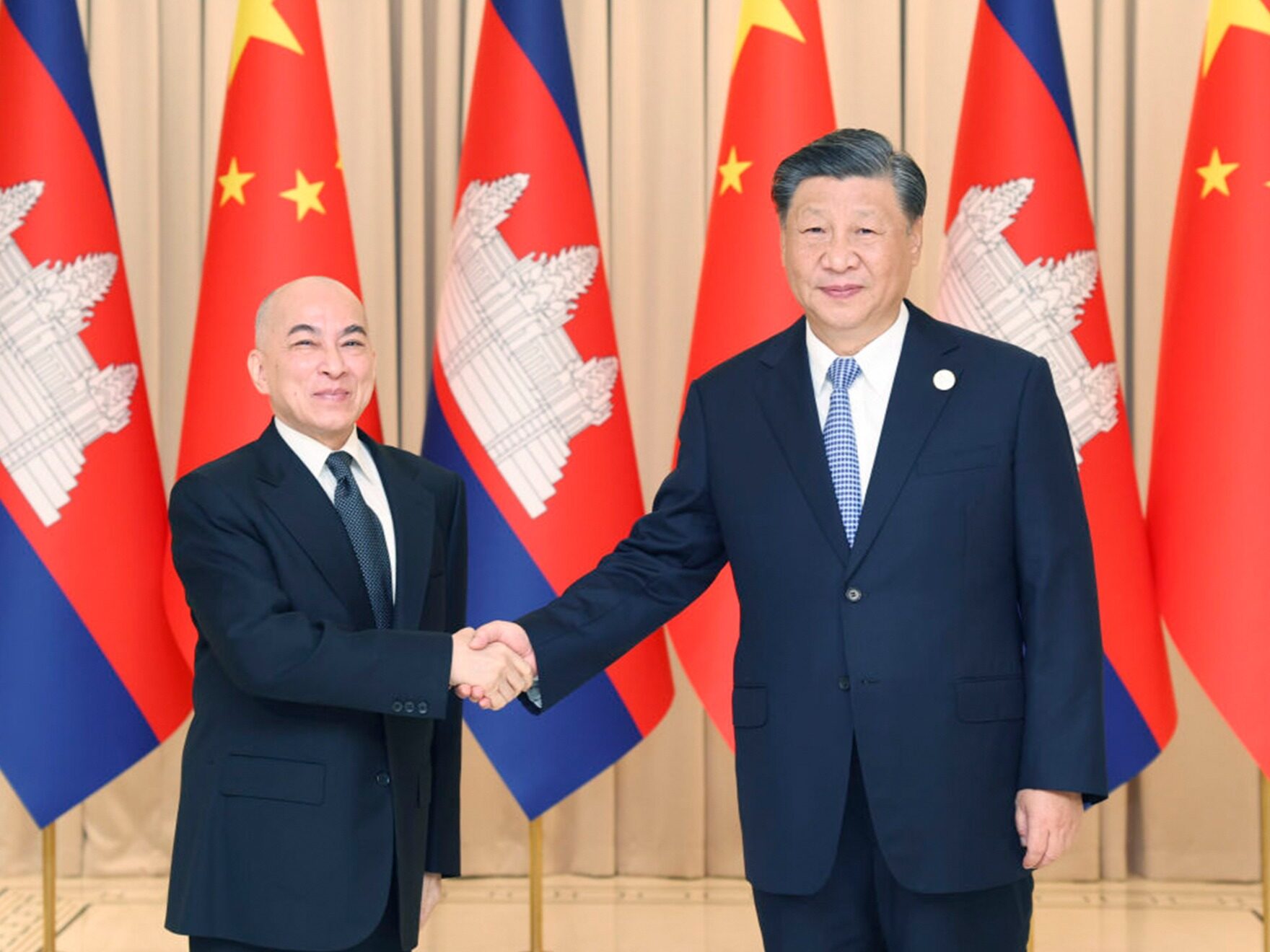- The East and West Project is an opportunity for the west to rise again, and it is also a reorganization of China's digital economy.

During the Sui and Tang dynasties, the successful excavation of the Tongji Canal connected Luoyang and Yangzhou. Since then, the food resources from the south of the Yangtze River have been continuously transported to the north and Kansai, and the entire economic structure of China has changed. Historically, every large-scale project connecting China and the north and the south has had a profound impact on China's economic, cultural and social development. The same is true for the West-East Gas Transmission and the South-to-North Water Diversion. And the closest such change to us is the one that is taking place.
Not long ago, the State Council issued the "14th Five-Year Plan for the Development of Digital Economy", pointing out that during the "14th Five-Year Plan" period, China's digital economy has turned to a new stage of deepening application, standardized development, and inclusive sharing, and proposed that "in the Beijing-Tianjin-Hebei, Triangle, Guangdong-Hong Kong-Macao Greater Bay Area, Chengdu-Chongqing Shuangcheng Economic Circle, Guizhou, Inner Mongolia, Gansu, Ningxia and other regions to deploy national hub nodes of the national integrated computing power network", "Accelerate the implementation of the 'East and West' project", etc.

Then, what is the "calculation of the east and the west", which is regarded as another major infrastructure project after the South-to-North Water Diversion, West-to-East Power Transmission, and West-to-East Gas Transmission, and what is the significance of such a layout? How will "East Number and West Count" be promoted, and how will it help China achieve the "dual carbon" goal and high-quality development?
Reconstructing the network structure and enhancing international competitiveness
Speaking of the South-to-North Water Diversion Project, West-to-East Electricity Transmission and other projects, everyone is not unfamiliar. So, what kind of project is "counting the east and counting the west"?
"Simply put, West-to-East electricity transmission means sending electricity from the west to the east. Counting the electricity from the east to the west means taking the numbers from the east to the west to calculate." National Development and Reform Commission Innovation-Driven Development Center (Digital Economy Research and Development Center) Center) Deputy Director Xu Bin said.
The "number" in "East and West Calculation" refers to data; "calculation" refers to computing power, that is, the ability to process data.

In recent years, technologies such as the Internet, big data, cloud computing, artificial intelligence, and blockchain have accelerated innovation and are increasingly integrated into the entire process of economic and social development. It is becoming a key force in reorganizing global factor resources, reshaping the global economic structure, and changing the global competition pattern.
As the core element of the digital economy, data is closely related to our production and life. Browsing news, watching movies online, shopping on the go, financial planning...we generate a lot of data every day.
The data released at the 2021 China International Big Data Industry Expo shows that since 2015, the average annual growth rate of China's data increment has exceeded 30%; in 2019, the amount of data generated in China accounted for about 9.3% of the world's total, ranking second in the world. As a result, the demand for computing power is also increasing.
"As the core productivity of the digital economy, computing power has become a new focus of global strategic competition." The responsible comrade of the High Technology Department of the National Development and Reform Commission said when answering a reporter's question on the situation of "East and West".
At present, the scale of China's data centers has reached 5 million standard racks, and the computing power has reached 130EFLOPS (1.3 trillion floating-point operations per second). With the continuous penetration of digital technology into all fields of the economy and society, the demand for computing power in the whole society is still very urgent, and it is expected that it will continue to grow rapidly at a rate of more than 20% every year.

As far as China's current situation is concerned, most of the data centers are located in the eastern region, and only less than 20% of the data centers are located in the west. But building a data center requires not only land, but also energy, making it unsustainable to develop data centers on a large scale in the east.
The western region of China is rich in resources, especially in renewable energy, such as solar energy and wind energy, and so on. In some places, the climate is relatively cool, which is also conducive to reducing costs for data center cooling, and has the potential to develop data centers and meet the computing power demand in the east. Therefore, it is urgent to increase the top-level design of the national computing power network, transform the network-centric development model as soon as possible, and reconstruct the network structure around the data center.
"Like the South-to-North Water Diversion Project and the West-to-East Power Transmission Project, we should give full play to the advantages of China's system and mechanism, integrate the layout from a national perspective, optimize the allocation of resources, and improve the efficiency of resource use." said a responsible comrade of the High Technology Department of the National Development and Reform Commission.
East counts, west counts. It is of great significance to implement the "East Data and Western Calculation" project to promote the rational layout of data centers, optimize supply and demand, green intensification and interconnection. Promote coordinated regional development.
Promote complementary resource advantages
With the accelerated progress of digital transformation and upgrading in various industries, the total amount of data in the whole society has exploded, and the demand for data storage, computing, transmission, and application has increased significantly.

"The rapid development of data centers has put forward higher requirements for energy, land, climate and other conditions. Some eastern regions have great application demands, but the energy consumption indicators are tight and electricity costs are high, making it difficult and limited to develop large-scale data centers. However, some western regions are rich in renewable energy and have a suitable climate, but there are bottlenecks such as small network bandwidth and high cost of inter-provincial data transmission, which cannot effectively meet the needs of the eastern region. Therefore, it is urgent to increase the top-level design of the national computing power network, and to transform as soon as possible. The network-centric development model restructures the network structure around the data center," said Jin Xiandong, a spokesman for the National Development and Reform Commission.
This layout has been highly recognized by many parties. Zheng Weimin, academician of the Chinese Academy of Engineering and professor of the Department of Computer Science and Technology of Tsinghua University, said that the "East Number and West Calculation" project can make full use of the vast space resources, natural resources and power resources in western China, and enhance the ability of cross-regional collaborative R&D and application. "Supercomputing systems are becoming more and more important to the development of the national economy, such as earthquake simulations, atmospheric simulations and quantum simulations, etc. The computing machines in the western regions of Guizhou, Inner Mongolia, Gansu and other regions are connected by fiber optic cables to calculate the relevant data. It can realize the overall utilization of resources." Zheng Weimin said.
From the layout of the 8 national computing power hub nodes, it is not difficult to see that in addition to the hub nodes located in the western regions such as Inner Mongolia, Guizhou, and Gansu, the country has also made layouts in the eastern regions such as Beijing-Tianjin-Hebei and the Yangtze River Delta. Different computing power hub nodes have different positioning and play different roles.
According to the Reply Letter of the National Development and Reform Commission and other departments on agreeing to start the construction of a national hub node for the national integrated computing power network in the Yangtze River Delta region, the hub plans to establish two data center clusters, namely, the Yangtze River Delta Ecological Green Integrated Development Demonstration Zone Data Central cluster, Wuhu data center cluster.

In the future, these two data center clusters will optimize the computing power layout, actively meet the real-time computing power needs of the central cities in the Yangtze River Delta, guide the warm and cold business to migrate to the west, and build a "integrated coordination and radiation of the whole area" of computing power resources in the Yangtze River Delta region. development pattern.
"'East Numbers and West Calculations' can solve the problems of tight energy consumption indicators, high electricity costs, and limited space for large-scale data center development in the eastern region, while making full use of the abundant renewable energy and available wasteland in the western region. In addition, 'East and West Calculation' can drive the vast western region to participate in the wave of the digital economy guided by intelligence, better release the 'late-mover advantage' and achieve rapid development." Liu Miao, general manager of Lenovo Enterprise Technology Group's Service Solutions Business Express.
In line with the "dual carbon" goal, there is more room for green development
Huailai, Hebei, one of the eight major computing power hub nodes laid out by the country - an important part of the Beijing-Tianjin-Hebei computing power hub node.
According to the "Reply Letter from the National Development and Reform Commission and other departments on the approval of the Beijing-Tianjin-Hebei region to start the construction of a national hub node for a national integrated computing power network", the Beijing-Tianjin-Hebei hub plans to establish a Zhangjiakou data center cluster, and the starting area is Huailai County, Zhangjiakou City , Zhangbei County, Xuanhua District.
In the big data industry base in Huailai, a data center covering an area of 1,000 acres is under construction, and the first phase is scheduled to be put into operation in July this year.

According to the person in charge of Hebei Huailai Big Data Industry Base, at present, in the first start-up area of about 500 mu, 9 plots are data centers. After the completion of these 9 plots, the total number of servers will reach 500,000. By 2025, there will be an agglomeration of 3 million servers.
In addition to the investment in electromechanical and civil engineering, it is also planned to build wind and photovoltaic power generation projects in Zhangjiakou area. When all completed, it will become a zero-carbon big data industrial base.
Green, low-carbon, and promoting the sustainable development of the digital economy are exactly the meaning of the "East and West" project.
According to industry insiders, data centers are known as "smoke-free steel mills" and "electric tigers", and electricity costs account for "the bulk" of their operating costs. The head of a big data company who has worked hard in the data industry for many years admitted that a super-large data center consumes nearly 100 million kilowatt-hours of electricity every year. Guide the construction of new data centers to the new energy power generation side, consume new energy locally, and promote the continuous optimization of the energy structure of data centers, which can help achieve the "dual carbon" goal.
According to the relevant staff of the Gansu Provincial Development and Reform Commission, the computing power hub node in Qingyang City is based on the advantages of its abundant renewable energy and climate conducive to the reduction of energy consumption and operation and maintenance costs of the data center.
"At present, the utilization rate of green electricity in data centers is about 20%." Xu Bin said that through the "East and West" project, after a large number of data centers are built in the west, the use of green electricity can be improved. "If The utilization rate can be increased to 80%, then by 2025, the total carbon emissions of 1.6 Beijing cities can be reduced."

In addition, promote the creation, operation and maintenance and renovation of green data centers, encourage the application of high-efficiency IT equipment, cooling systems, power supply and distribution systems, and auxiliary system technology products, and promote enterprises to deepen the green design, construction, procurement and operation management of new data centers It can also contribute to the realization of the "double carbon" goal.
Industry insiders said that after the development of the digital economy, with the support of data centers, through big data, artificial intelligence, etc., cities will greatly improve the efficiency of production and life, and the role of energy saving and carbon reduction will also be highlighted.
In the research and design of the implementation path of the "East Number and West Calculation" project, we have always adhered to the system concept, forward-looking thinking, overall planning, and strategic layout. During the implementation of the follow-up projects, we must adhere to a national game of chess, promote strengths, strengths and weaknesses, and coordinate the implementation of the "East and West" project, so as to fully implement the 14th Five-Year Plan for China's national economic and social development and achieve the long-term goal of 2035. make due contributions. Editor / Xu Shengpeng
Comment
 Praise
Praise
 Collect
Collect
 Comment
Comment
 Search
Search














Write something~